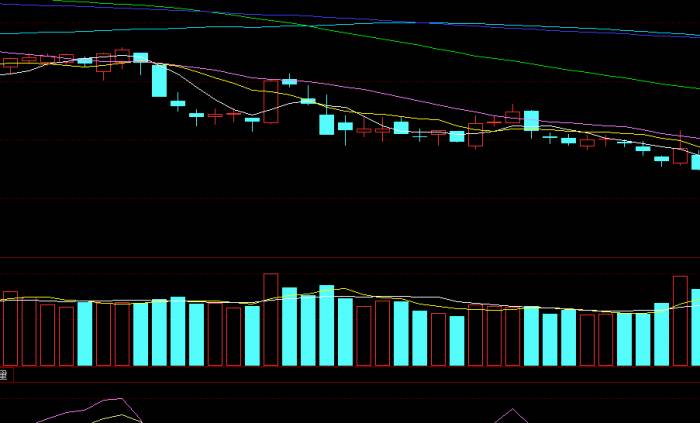Baijiu Stocks Plunge, Moutai Dips Below 1300 Yuan
Today marks the last trading day before the Mid-Autumn Festival.
Here, we wish everyone a happy Mid-Autumn Festival and a family reunion.
Back to business, looking at the market information, precious metals, insurance, China Shipbuilding Industry Corporation (CSIC), real estate, diversified finance, trade, rental rights, oil and gas exploration, and characteristic small towns are among the sectors that have seen gains.
Among them, precious metals have led the two markets with an increase of more than three percentage points.
However, today's hot topics have not seen significant gains, with only about 10 sectors seeing an increase of more than one percentage point.
The rise in insurance, CSIC, real estate, and oil and gas exploration sectors is due to a rebound from oversold conditions.
In the current A-share market, the rebound of oversold sectors is unlikely to be sustained.
Therefore, today's hot topics are likely to be a one-day event, and they are likely to become the direction of the decline after the holiday.
Advertisement
Baijiu stocks are among the sectors that have seen significant declines in the A-share market today, with Moutai, Wuliangye, and Fenjiu all seeing declines of more than two percentage points during the trading day.
Moutai's stock price even fell below 1,300 yuan at one point, setting a new low in nearly five years.
News indicates that this year's channel expectations for the peak season are relatively flat.
According to a person from the Sichuan Alcohol Circulation Association, this year's Mid-Autumn sales are expected to decline by 20% to 30% year-on-year.
The decline in baijiu stocks has directly led to a comprehensive decline in consumer topics, with beverages, food, and aquaculture all seeing a decline.
I personally believe that the decline in baijiu stocks is due to the excessive gains in the previous period.
Compared to the tenfold increase, the current halving of the stock price is not much.
Based on the current stock price, the dividend yield of Moutai, Wuliangye, and Fenjiu is only about three percentage points; when profits remain unchanged, when the dividend yield exceeds 5%, there will naturally be a continuous flow of funds entering the market to bottom-fish.
Today, the A-share market still showed a trend of rising and falling, and although the four major stock indexes showed signs of turning red and rising during the trading day, they still ended with a green decline.
Looking at the intraday chart, the Shanghai Composite Index had a pull-up of about 10 points in the morning, but it then showed a continuous downward trend, falling more than 10 points at most; and today's Shanghai Composite Index once again set a new low of 2703 points, getting closer to the integer level and also closer to the annual low of 2635 points.
Looking at the daily K-line trend, the five-day moving average is still an important pressure facing the short-term Shanghai Composite Index, and the Shanghai Composite Index fell back after rising near the five-day moving average in the morning.
As of the close, the turnover of the Shanghai market was only about 220 billion, and the stop-loss trading volume has appeared, but the Shanghai Composite Index's shrinking and falling trend is still continuing.
I personally believe that if the Shanghai Composite Index wants to reverse the downturn, there are two things we need to pay attention to.

First, the turnover of the Shanghai market needs to break through 400 billion.
Without the support of trading volume, the ultimate result of the Shanghai Composite Index's pull-up and rise is to rise and fall.
Second, the Shanghai Composite Index's daily K-line needs to be stable above the 20-day moving average for five consecutive days.
The 20-day moving average is the dividing line of the medium-term strength trend of the Shanghai Composite Index.
Only when the Shanghai Composite Index stands firm above the 20-day moving average can it have the possibility of strengthening.
1.
High dividend large-cap stocks are expected to rise again.
In the declining market, the A-share market does not have the conditions for sustained growth, and without the performance of the securities stocks' limit-up tide, the A-share market will not be able to have a rapid rise.
At this time, high dividend large-cap stocks that have experienced deep adjustments are expected to become the focus of market funds again, because the worse the market, the more serious everyone's risk aversion will be; large-cap stocks with high dividends, low valuations, and large market value naturally become the first choice for large funds to avoid risks.
For example, the four major banks, three oil companies, stocks with Chinese characters, and stocks with special valuation concepts, when their dividend yield exceeds 4%, they will attract the attention of risk-avoiding funds; when their dividend yield breaks through 5%, or even exceeds 6%, the existing funds in the market will choose them for risk-avoiding operations.
2.
Oversold sectors such as batteries, photovoltaics, and medical services still have a strong rebound expectation.
In addition to baijiu stocks, the decline in batteries, photovoltaics, and medical services is also more than one percentage point today.
These sectors are already oversold sectors, and after a brief pull-up, they have accelerated their decline again.
However, in my view, they do not have the risk of a large-scale kill, because the industry inflection point has already appeared, especially in oversold sectors such as batteries and photovoltaics, which are most likely to usher in a sustained rebound in the next period.
Large-cap blue-chip stocks in sectors such as batteries, photovoltaics, and medical services are mostly listed on the ChiNext board, and their pull-up and rise can drive the oversold ChiNext index to rebound and rise, which is in line with the basic logic of the current A-share market's oversold rebound.
Leave A Comment